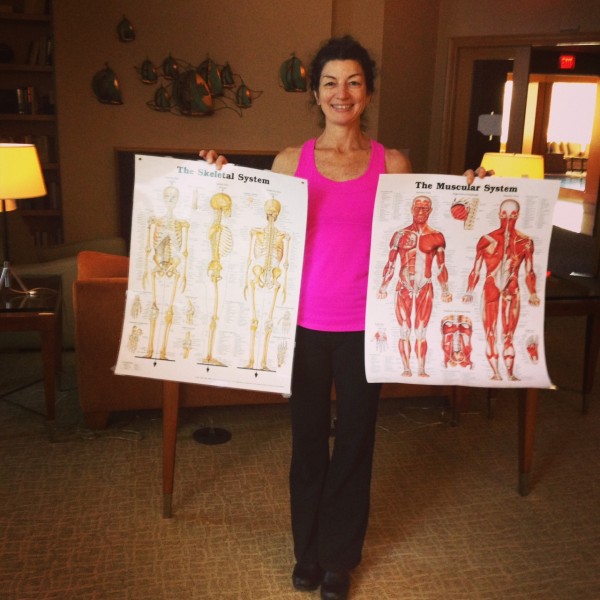
I’ve been reviewing the chapters in my soon to be released book, Stretched: Build Your Yoga Business, Grow Your Teaching Techniques, for the past two weeks. We’re up to Chapter 12, called Bringing Anatomy into Your Teaching. Let me start out by saying that once I wrote this chapter, I thought that it really only touched the tip of the iceberg but I had to start somewhere. The topic of anatomy is a life long learning topic and while you might think the facts are fixed ( the bone and muscles names don’t change), the application of the information does vary. So, I’ve found that learning anatomy is really a life long activity. By the same token, that’s what makes it interesting.
This chapter will give you some of the basics: it will review the rationale for bringing anatomy into your teaching in the first place. Keep in mind, not all teachers bring anatomy into their teaching. We all teach alignment in poses and so to some extent, that is teaching anatomy, but how much you do that and HOW you do it will vary from teacher to teacher. Also, I’ve found that it’s one thing to TEACH a pose and cue different anatomical landmarks that you’ve memorized and it’s another thing to teach it and really KNOW how all these different body parts work together ( or don’t). Both can be effective, both can be attractive to students and it’s the teacher who is really excited and interested about anatomy that will delve deeper into the details, the learning and enthusiastically bring this information into his or her classes.
The chapter goes into basic landmarks on the body as they relate to yoga and then I share 8 ways to apply anatomy to the practice. These are things like the anatomy behind moving from high to low push up. In this section, I share some references to articles I’ve seen about these different movements to credit teachers from whom I have learned a great deal. This is one of the wonderful things about social media these days: there are many great teachers out there who bring anatomy into the classroom and if you follow their posts on Facebook (Tiffany Cruikshank, Jill Miller, Dr Ray Long, Yoga International’s page- these are just a handful) you can make learning anatomy part of your day.
I’ve already started to think that this chapter could benefit from pictures. I guess that will have to be in Edition 2!
Next Up: Managing Challenges in the Classroom.
